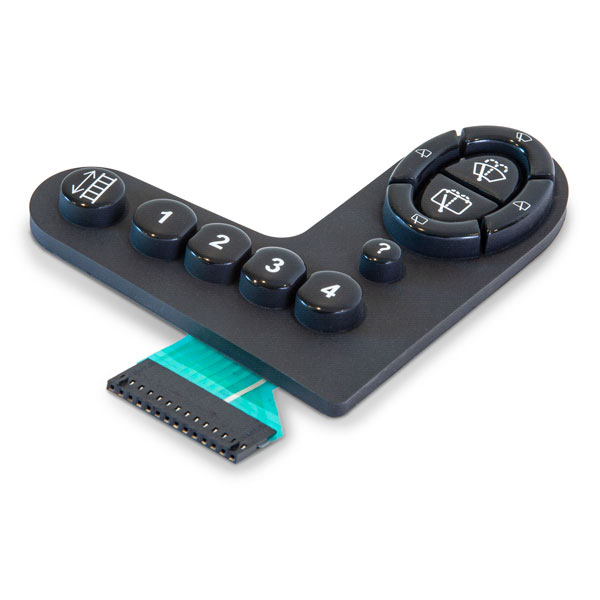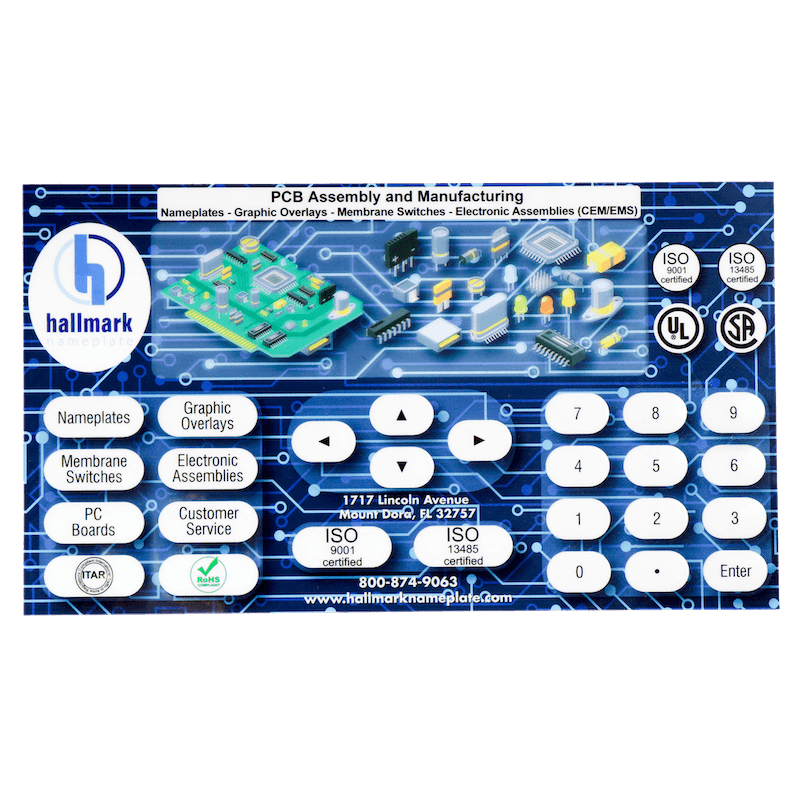How Membrane Switch Technology is Revolutionizing User Interfaces
How Membrane Switch Technology is Revolutionizing User Interfaces
Blog Article
Comprehending Membrane Layer Switches: The Trick to Trustworthy and durable Controls

What Are Membrane Layer Buttons?
Membrane layer buttons are a sophisticated service in the realm of individual interface modern technology, combining functionality and style effortlessly. These tools function as a user interface in between customers and digital systems, incorporating several components into a compact style. Normally created from adaptable, slim layers of products, membrane layer buttons are designed to react to touch, enabling users to communicate with machinery and electronic gadgets effectively.
The main elements of a membrane layer button consist of a published circuit layer, visuals overlay, and a spacer layer that stops unexpected activation. The visuals overlay can be personalized to show brand identity or customer choices, improving visual appeals while ensuring usability. Membrane layer buttons are typically utilized in various applications, consisting of clinical devices, consumer electronic devices, and commercial equipment, owing to their resilience and resistance to environmental variables such as wetness and dust.
Among the crucial advantages of membrane buttons is their capability to withstand damage, making them suitable for high-traffic atmospheres. Additionally, they are light-weight and need marginal area, permitting cutting-edge styles in product growth. In general, membrane layer changes represent a effective and practical option for modern digital interfaces, weding technology with user-centric style principles.
Exactly How Membrane Changes Job
The procedure of membrane changes hinges on a straightforward yet efficient mechanism that converts individual input into digital signals. When a customer presses the switch, the top layer warps, permitting a conductive component in the circuit layer to make contact with a matching conductive pad on the bottom of the visuals overlay.
The layout of membrane layer switches can vary, but they commonly include domes or tactile components to give responses to the individual, enhancing the total experience - membrane switch. The products used in membrane switches, such as polyester or polycarbonate, add to their toughness and resistance to ecological variables, consisting of wetness and dust. The printed circuits are commonly enveloped, which shields them from wear and tear over time.
Advantages of Membrane Layer Switches

Furthermore, membrane layer buttons are recognized for their sturdiness. Created from durable materials, they are immune to dirt, moisture, and physical wear, which significantly prolongs their life-span contrasted to conventional mechanical switches. This longevity makes them especially appropriate for high-traffic environments and applications calling for longevity.
Another substantial benefit is the simplicity of cleansing and maintenance. The smooth surface of membrane changes reduces dirt buildup and is frequently unsusceptible spills, making them perfect for settings that require constant sanitization.
In addition, membrane buttons supply a streamlined account, bring about a anchor thinner design that can be incorporated into numerous tools without adding mass. This feature not only boosts the visual charm but additionally adds to an extra ergonomic item design.
Applications of Membrane Layer Buttons
Functional and user-friendly, membrane layer switches discover applications throughout a large variety of markets, including medical devices, customer electronic devices, and commercial tools. In the clinical field, these switches are indispensable to gadgets such as analysis equipment, client tracking systems, and mixture pumps, where integrity and simplicity of cleaning are essential. Their capability to maintain and stand up to rough environments functionality makes them excellent for such applications.

In customer electronic devices, membrane layer switches are made use of in items like microwaves, cleaning machines, and remotes - membrane switch. Their streamlined style enables instinctive individual interfaces, boosting the total individual experience while providing durability and resistance to tear and put on
Commercial tools additionally takes advantage of membrane layer buttons, specifically in control panels for machinery and automation systems. These buttons provide protection versus dust and moisture, making sure consistent performance in difficult environments. Their adjustable attributes allow makers to tailor them to specific functional demands, enhancing efficiency and capability.
Choosing the Right Membrane Layer Switch
When choosing a membrane switch, it is necessary to think about numerous aspects that affect performance and viability for particular applications. The key factors to consider consist of environmental problems, responsive feedback, durability, and style specifications.
First, examine the operating environment; buttons subjected to moisture, chemicals, or severe temperature levels call for specific products to make certain longevity and performance. Next off, examine the need for responsive feedback. Depending on user interaction, some applications might gain from a responsive response to verify activation, while others might favor a non-tactile style for visual reasons.
Durability is an additional essential variable; membrane layer buttons ought to be made to hold up against frequent usage, impacts, and abrasion. Guarantee the selected button can sustain the anticipated lifecycle, especially in high-usage situations.

Conclusion
In conclusion, membrane layer switches serve as essential components in the design of trusted and durable control systems throughout different sectors. The versatility of membrane layer changes permits for tailored services that like it satisfy specific functional demands, strengthening their significance in modern technology.
Membrane layer switches over represent a crucial facet of modern interface style, mixing capability with strength in different applications.Membrane switches are a sophisticated service in the world of individual interface modern technology, combining performance and design flawlessly. Commonly constructed from flexible, slim layers of products, membrane layer switches are made to respond to touch, allowing customers to connect with equipment and digital gadgets properly.
The design of membrane buttons can vary, yet they commonly integrate domes or tactile aspects to give comments to the user, enhancing the overall experience.In verdict, membrane layer switches offer as necessary parts in the style of resilient and reputable control systems why not try these out throughout various industries.
Report this page